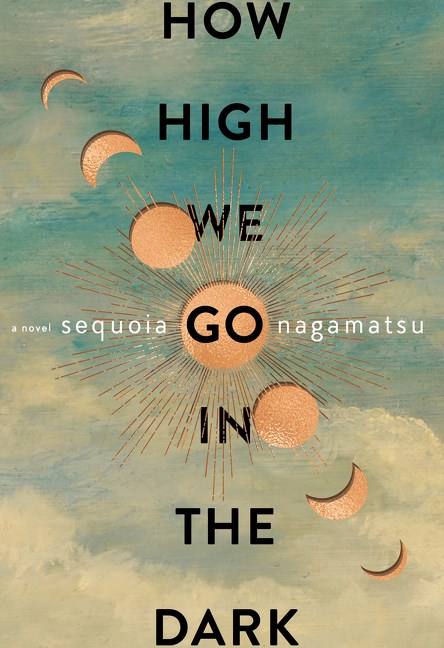- The Good: Imaginative near-future post-pandemic
- The Bad: Collection of loosely connected short stories lack a narrative arc
- The Literary: Spanning centuries, multiple perspectives of losing those you love
In the near future, archaeologists in the Arctic Circle discover the perfectly preserved remains of a girl who died from an ancient virus. Soon after, the Arctic Plague takes over the planet, reshaping life as we know it. Humanity survives, but individuals must find ways to move on in the face of such extreme personal trauma and global tragedies.
How High We Go in the Dark is an ambitious story of the human race struggling to emotionally rebuild itself in the aftermath of an apocalyptic plague. Spanning centuries, each chapter follows one member of a small group of loosely linked characters. Some scenarios and relationships are extremely memorable; all are meant to capture the bittersweet nature of love and loss, showcasing individual heartbreak and hope, and highlighting the comfort that life brings people together in unexpected ways.
That said, this isn’t an easy book to read, especially if you have faced death recently. It’s already tragic enough that some of us get sick and die while others remain healthy, and there’s more than one story centered on survivor’s guilt. With our recent real-world pandemic winding down, the images of healthcare shortages, morgue stadiums, and memorial skyscrapers don’t seem too far-fetched.
But the stories also reveal the hidden evil in our society, especially how we turn death into profit. Want to make your death special? You can pay to have your body cremated and your ashes travel the world, or have it liquefied and turned in an ice sculpture. Your loved ones can rent hotel rooms to have a final moment with your corpse. Social media ghosts will continue your profile as if you never died. As the death tolls rise, so does bitcoin.
My favorites:
- A young stand-up comedian takes a job in a theme park designed for terminally ill children. The park makes their last day as special and happy as can be, until a ride on the final roller coaster goes fast enough for the child to lose consciousness and stop their heart. The guy falls in love with a young mother desperate to keep her infected son alive.
- A father loses his child to the plague and throws himself into his work as a scientist, genetically modifying pigs to harvest their organs to stave off death for the multitudes of infected children. One pig gains sentience and develops the capacity for human speech, so the scientist moves into the lab and reads it bedtime stories.
One of the problems with topping several “most anticipated books of 2022” lists is that readers’ expectations are set high. While I enjoy the thematic elements of finding meaning in tragedy and caring for one another, the “interconnected” stories feel too disparate. The book lacks a narrative focus. It’s as if the author wrote a series of short stories in the same universe that are packaged together as a novel. And, as with any collection of short stories, some are better than others.
In addition, the novel is billed as scifi because it’s post apocalyptic, dystopian, with extreme climate change, interstellar starships, and imaginative concepts like death-inducing roller coasters and human pyramids in purgatory. But the scifi is only there as a backdrop to expand the human condition so that when our experiences with death are all the same, it makes it feel that much more impactful. In terms of diversity, the multitude of Asian American experiences is nice, but there’s an abundance of male and especially cis perspectives.
Recommended for fans of literary scifi who are in the mood for human pathos delivered in little vignettes that make up our lives and our deaths.
